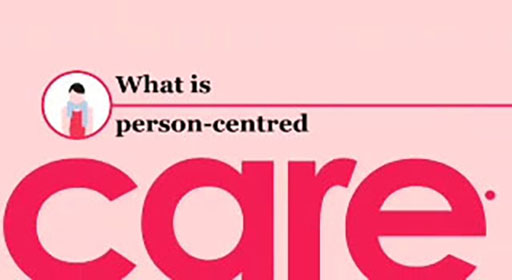2.3 Patient-centred care
One of the most consistent dimensions featured in definitions of healthcare improvement is patient-centred care (this phrase is most typically used in the US literature). This takes into account the preferences and desires of patients and acknowledges and respects their cultural background. Person-centred care is a related term (commonly used in the UK) but generally refers to the whole person (going beyond the narrow focus on their symptoms and treatment) and advocates a holistic approach to care which requires acknowledgement of wider social, psychological, societal and cultural factors that may affect the individual and their healthcare journey.
Activity 5
Watch this video about person-centred care.

Transcript: Person-centred care
[MUSIC PLAYING]
What is person-centered care? Person-centered care is where health and care professionals work collaboratively with people using their services and their communities.
What does that actually mean? It means that care is coordinated, tailored to the needs of the individual, underpinned by dignity, compassion, and respect and enables them to live a fulfilling life.
Seems like a no-brainer. Don’t we already do that? Actually, it’s not standard practice, but it should be. Is it worth it? In a word, yes.
Person-centered care can have lasting benefits. There is evidence that it improves health outcomes, care quality, and patient experience.
On the professional side, it enhances staff satisfaction. If we want to adopt it, fundamental changes to care are required.
How do we put it into practice? There are lots of things we can do to develop people’s roles in health services and to unlock that person-centered potential to get health and care services working better together and to help people to have the knowledge, the skills, and the confidence to work differently with their health and the NHS.
[MUSIC PLAYING]
- What are the main elements of person-centred care?
- What are the benefits – for patients and staff?
Discussion
According to the video, person-centred care is coordinated, tailored to the needs of the individual, underpinned by dignity, compassion and respect, and enables the individual to lead a fulfilling life. It improves care quality, health outcomes and patient experience. It also enhances staff satisfaction.

